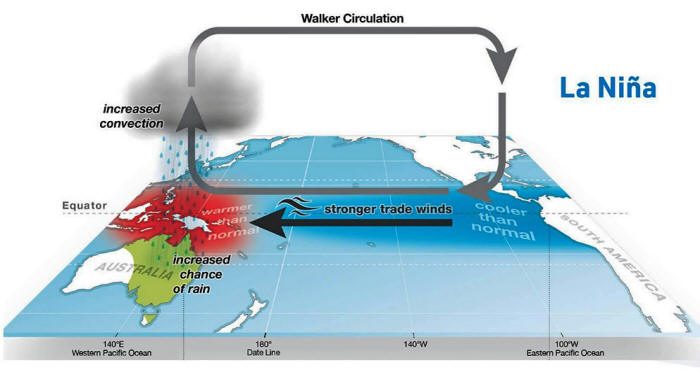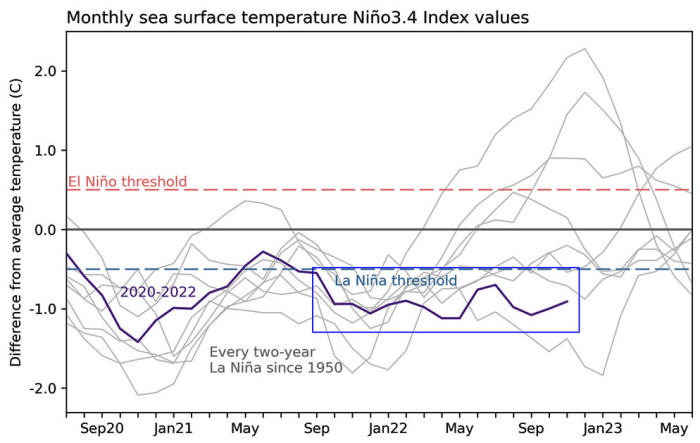|
by Andrej Flis December 23, 2022 from Severe-Weather Website
First, we will look at
the latest global drivers and then the snowfall predictions and
trends from mid-Winter into the early Spring.
But our primary focus is on global long-range weather forecasting systems.
We will show you their
snowfall predictions for the rest of Winter and the early part of
Spring.
This region of the
equatorial Pacific Ocean changes between warm and cold phases.
Typically there is a phase change around every 1-3 years.
The image below shows the
circulation pattern of a cold phase (currently active) and its
ocean-atmosphere connection.
The ENSO influence is
spread globally through this feedback system, creating a strong
change in Winter temperature and snowfall patterns.
You can see the ENSO
region in the cold phase (La Niña). But the cold anomalies are
weakening, losing the organized shape, and starting to break down
slowly.
This way, we can use
these anomalies as an “indicator” to better understand the current
state of the global climate system and its seasonal development.
This is also the final
cold phase for at least two years.
The cold La Niña
conditions are forecast to decay quickly over Winter. However, going
deeper into 2023, you can see an increased probability of a warm
phase (El Niño) developing.
Despite weakening, La
Niña is still active and creates its global influence. We will take
a closer look at the weather effects that La Niña usually shows over
North America, which is under a more direct influence.
Continue reading
HERE...
|






